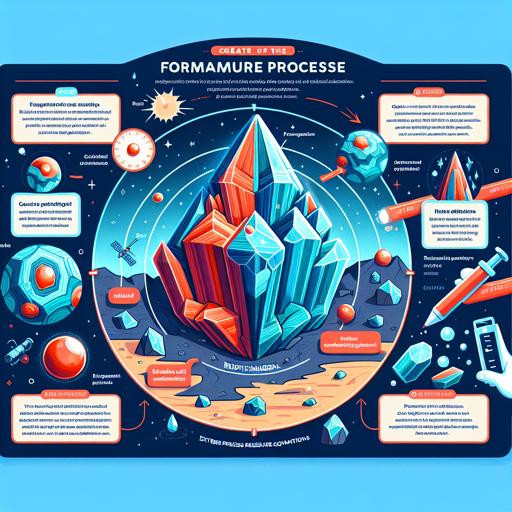Reidite Under Pressure: A Mineral's Transformation
Unveiling the process and significance of Reidite's formation under extreme pressure conditions.

Reidite Under Pressure: A Mineral’s Transformation
From the core of the Earth to the surface, our planet is a treasure trove of minerals. Each mineral carries a unique story of its formation, and Reidite is no exception. This rare, high-pressure mineral undergoes a fascinating transformation that reveals much about the Earth’s geodynamic processes.
The Discovery of Reidite
Reidite was first discovered inside a meteor crater in Western Australia in 1969. Named after geologist Dr. Frank Reid, this mineral is a high-pressure polymorph of Zircon. It’s formed under extreme pressure conditions, typically over 30 gigapascals (GPa), which is approximately 300,000 times atmospheric pressure!
The Formation of Reidite
Reidite forms when Zircon, a common mineral in the Earth’s crust, experiences a sudden increase in pressure due to events such as asteroid impacts. This process transforms the mineral’s internal structure, creating a denser, more stable form.
“Pressure, time, and heat work in harmony to create the world’s most extraordinary minerals.” - Unknown
A Comparison: Reidite vs. Zircon
To truly appreciate the transformation from Zircon to Reidite, let’s review the differences between these two minerals:
| Property | Zircon | Reidite |
|---|---|---|
| Pressure | Usually forms under 1 GPa | Forms above 30 GPa |
| Density | Lower density | Higher density due to rearranged atomic structure |
| Stability | Stable under normal conditions | More stable under high-pressure conditions |
| Occurrence | Abundant in the Earth’s crust | Rare, known from a few meteorite craters |
The Importance of Reidite
The presence of Reidite is a telltale sign of extreme geological events. By studying occurrences of this mineral, scientists can learn about the history of meteor impacts on Earth. Furthermore, understanding the conditions under which Reidite forms can provide insights into the Earth’s deep interior, where similar extreme pressures exist.
For more detailed information on Reidite, you can visit the Mindat database, a comprehensive resource on minerals.
Conclusion
Reidite embodies the transformative power of pressure, representing a physical testament to the extreme forces at work beneath the Earth’s surface. Its rare occurrence and unique formation process make it a mineral of significant interest in geology and Earth science. As we continue to study Reidite and other high-pressure minerals, we peel back more layers of our planet’s fascinating geological history.